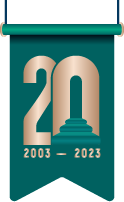1 State Key Laboratory of High Field Laser Physics and CAS Center for Excellence in Ultra-Intense Laser Science, Shanghai Institute of Optics and Fine Mechanics (SIOM), Chinese Academy of Sciences (CAS), Shanghai 201800, China
2 Center of Materials Science and Optoelectronics Engineering, University of Chinese Academy of Sciences, Beijing 100049, China
3 XXL—The Extreme Optoelectromechanics Laboratory, School of Physics and Electronic Science, East China Normal University, Shanghai 200241, China
4 State Key Laboratory of Precision Spectroscopy, East China Normal University, Shanghai 200062, China
5 School of Physical Science and Technology, ShanghaiTech University, Shanghai 200031, China
6 Shanghai Research Center for Quantum Sciences, Shanghai 201315, China
7 Hefei National Laboratory, Hefei 230088, China


